
Dealing with a visibly damaged roof or leak? Learn about roof repair costs in Columbus to see how much you’ll need to budget for a permanent solution.
A quick anatomy lesson can help you keep your roof in tip-top shape


Flashing and gutters protect your home from water damage.
Other roof parts, like ceiling joists and collar beams, create the structure of your roof.
Inspect your roof once a year to make sure the parts remain damage-free.
If you need to replace your roof, expect to spend $5,800 to $12,550.
Your roof is one of the most important parts of your home, but do you know all the parts that make up the roof? Learning the anatomy of a roof can help you identify problems, pinpoint potential issues, and ensure your roof stays in good condition. This guide will help familiarize you with all the parts of a roof and what they do to help protect your home.
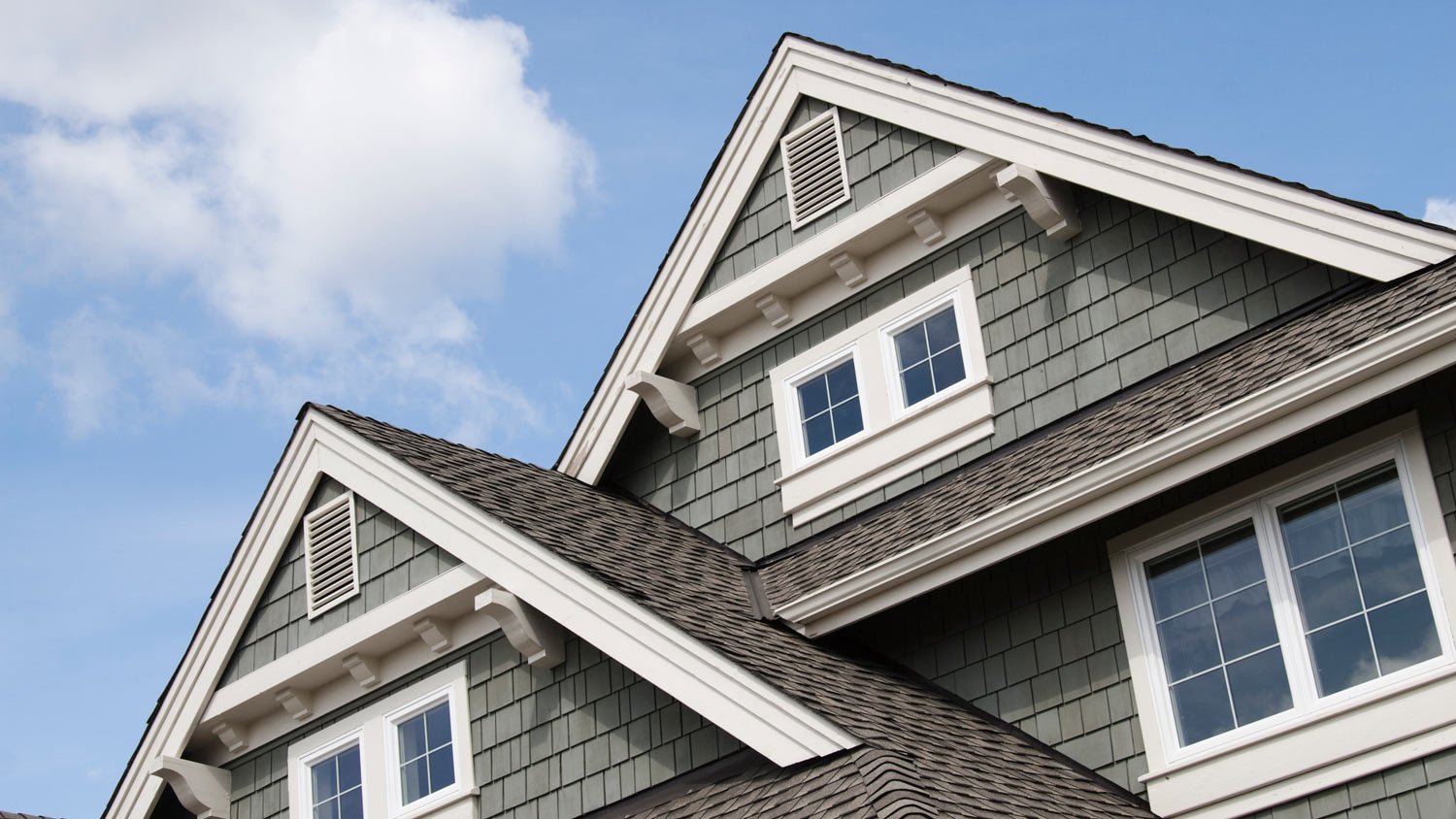
There are many different parts of a roof—and not just the ones you see. Some help provide structural support so your roof can carry the weight of snow or withstand strong winds. Others help prevent water damage, insulate your roof, or provide aesthetic appeal.
The following roof anatomy diagram showcases how a roof works and highlights important roof structure names.
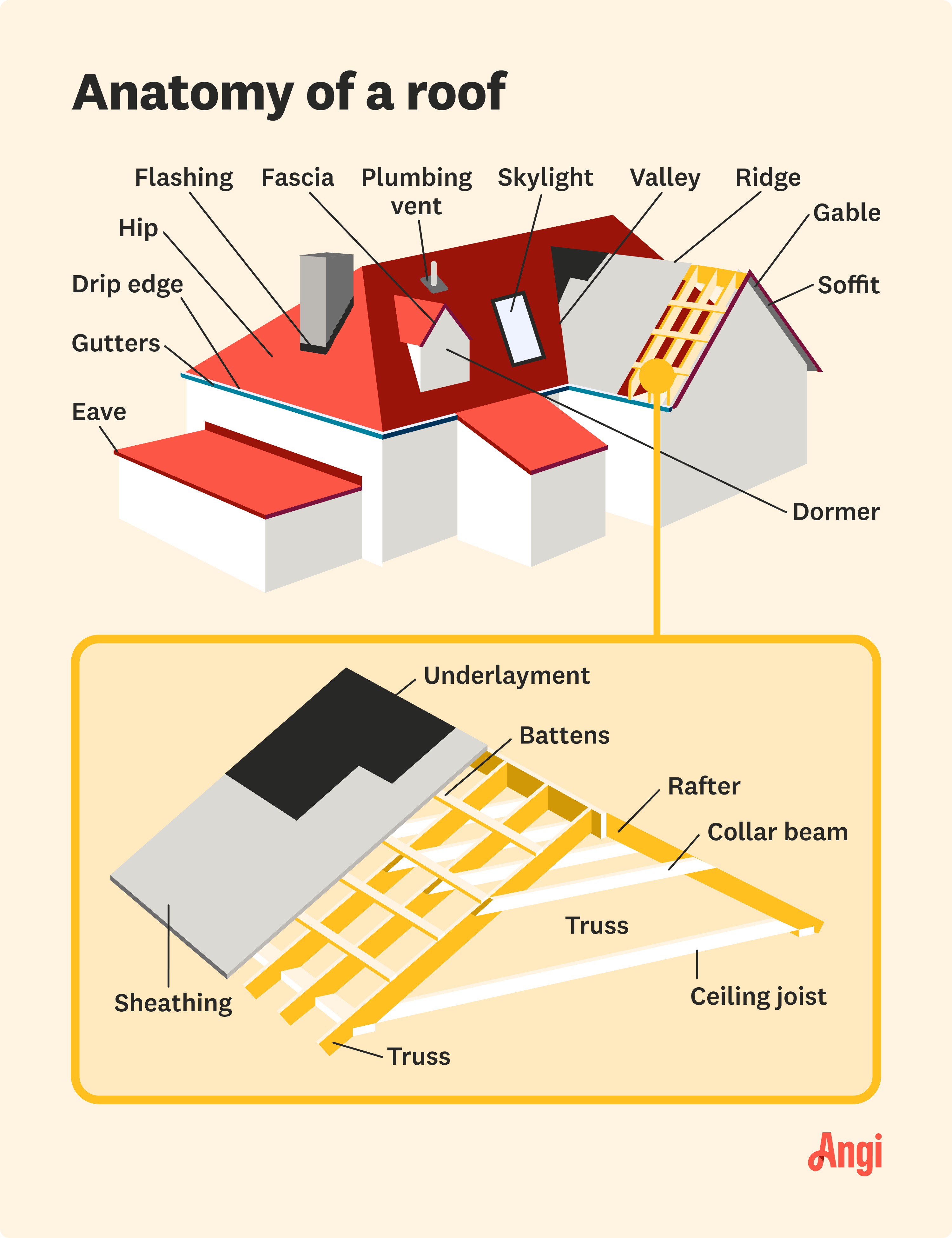
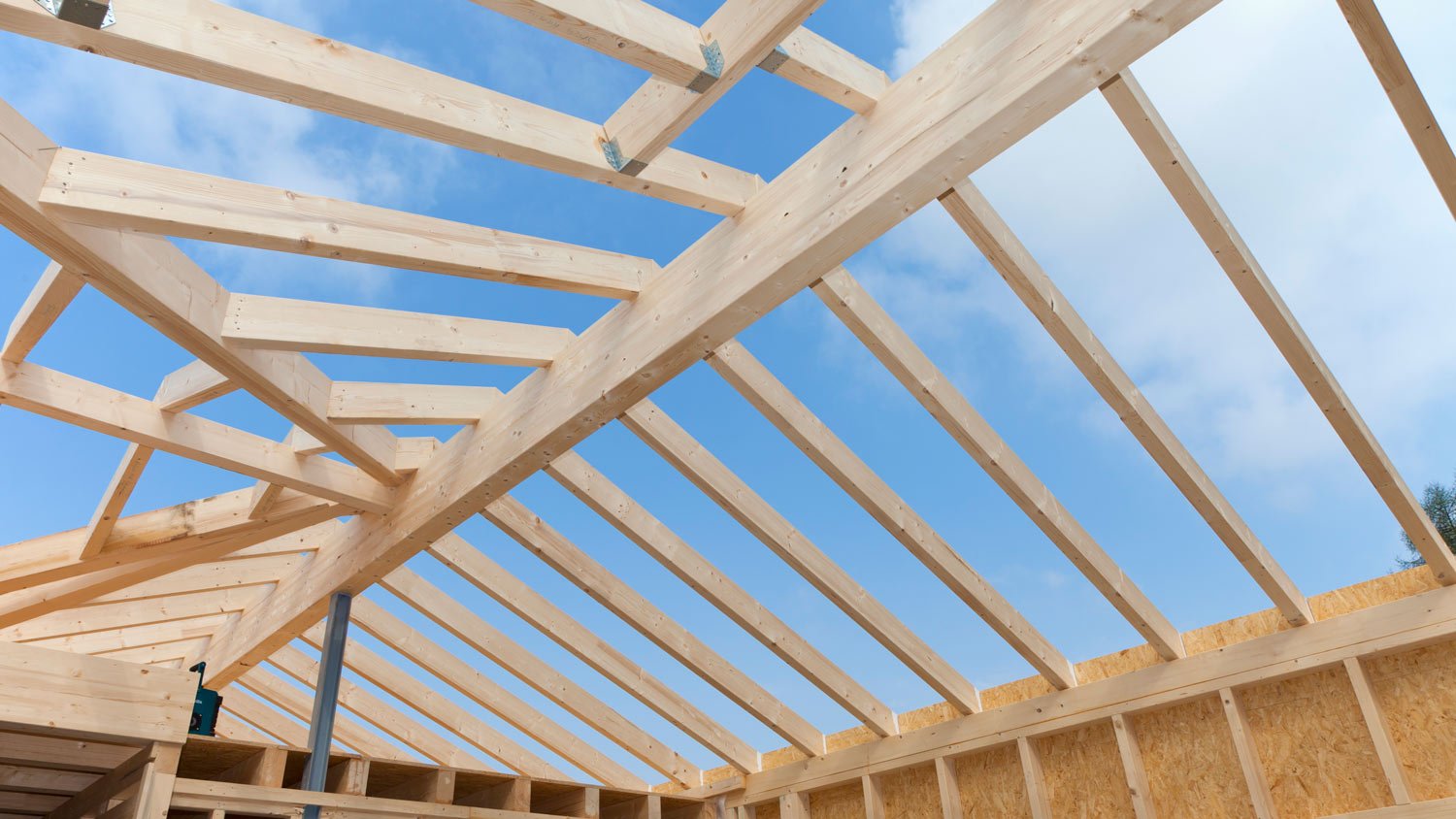
Think of the rafters like the skeletal system of your roof. Rafters are designed as a sloped structural unit using mainly two-by-tens or two-by-twelves and extend from your home’s ridge to the wall plate.
Rafters give your home its shape. They also often play a role in which type of shingles you might select (see #4 for more) when building or restoring a roof.
Some roofs use trusses instead of rafters. The main differences are that trusses use shorter pieces of wood (often two-by-fours) and are often prefabricated and installed all at once.
Because trusses require fewer materials, they are often more affordable than rafters but just as strong, which is why many newer American homes use them.
Sandwiched between your home’s shingles and sheathing, underlayment is not always included on standard roofs. But when it is, it provides an extra layer of security from water.
Professionals often install underlayment on metal roofing or roofs with low slopes due to slower water runoff. Vulnerable areas of the roof might also get this extra layer of protection.
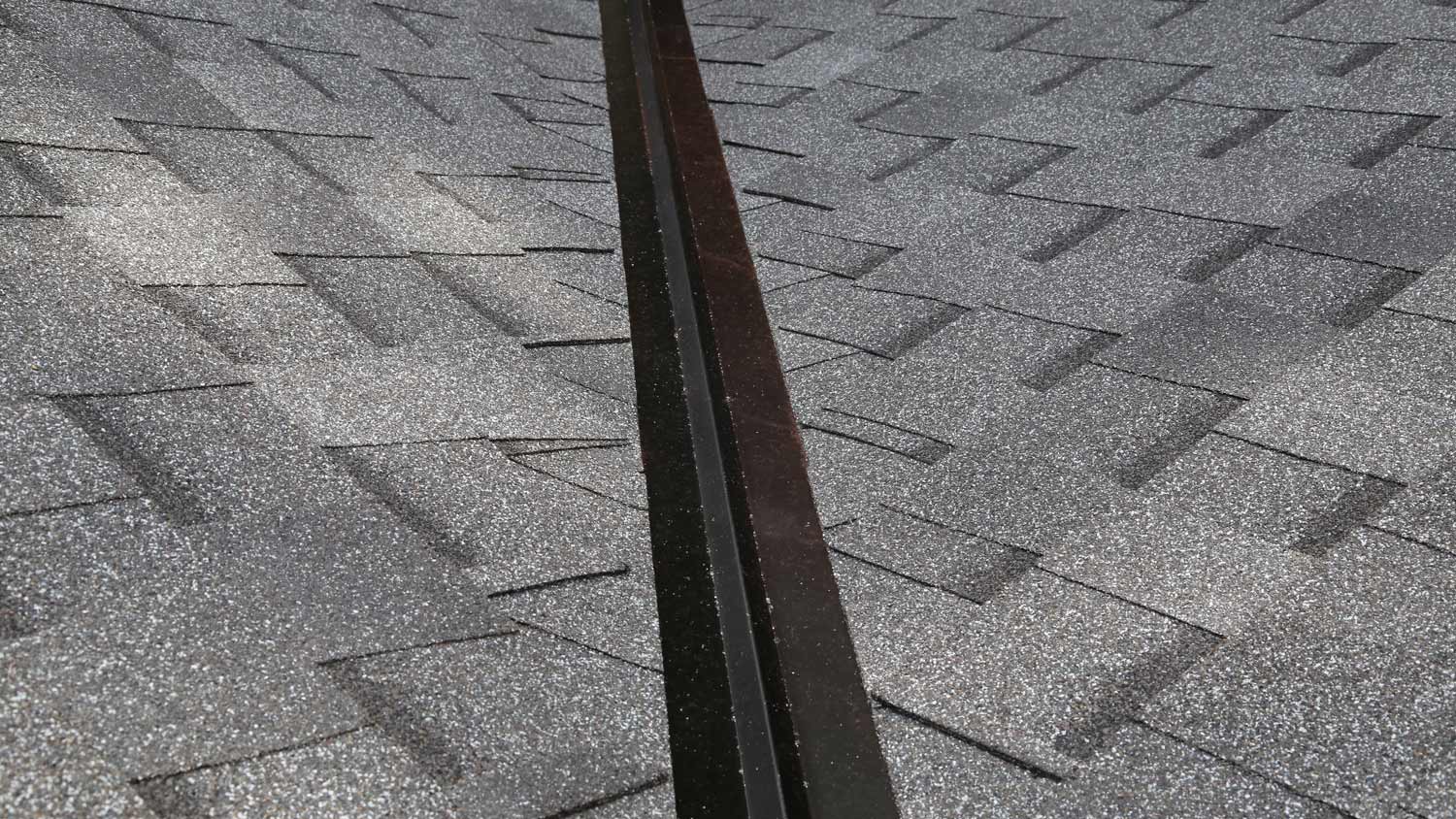
Often made from galvanized steel, roof flashing is one of the roof layers professionals install to direct water away from important or vulnerable parts of your roof.
When inspecting your roof, look for vertical points, such as areas along the chimney or plumbing vent. These locations are prime candidates for flashing installation, as the sharp angles make it easier for water to get through.
The sheathing (also known as decking) is the layer of flat wooden boards that attach to your home’s rafters or trusses.
The most common materials used for sheathing are plywood and oriented strand board (OSB). Roofers use a nail gun to secure individual panels down, making your roof into one cohesive unit.
This roof component consists of horizontal beams, typically made from wood, that support your ceiling and run from wall to wall. Contrary to popular belief, they don’t actually support your roof structure unless you have a flat roof. Instead, they’ll anchor your walls so they don’t cave inward or outward and hold up the drywall that makes the flat surface of your ceiling.
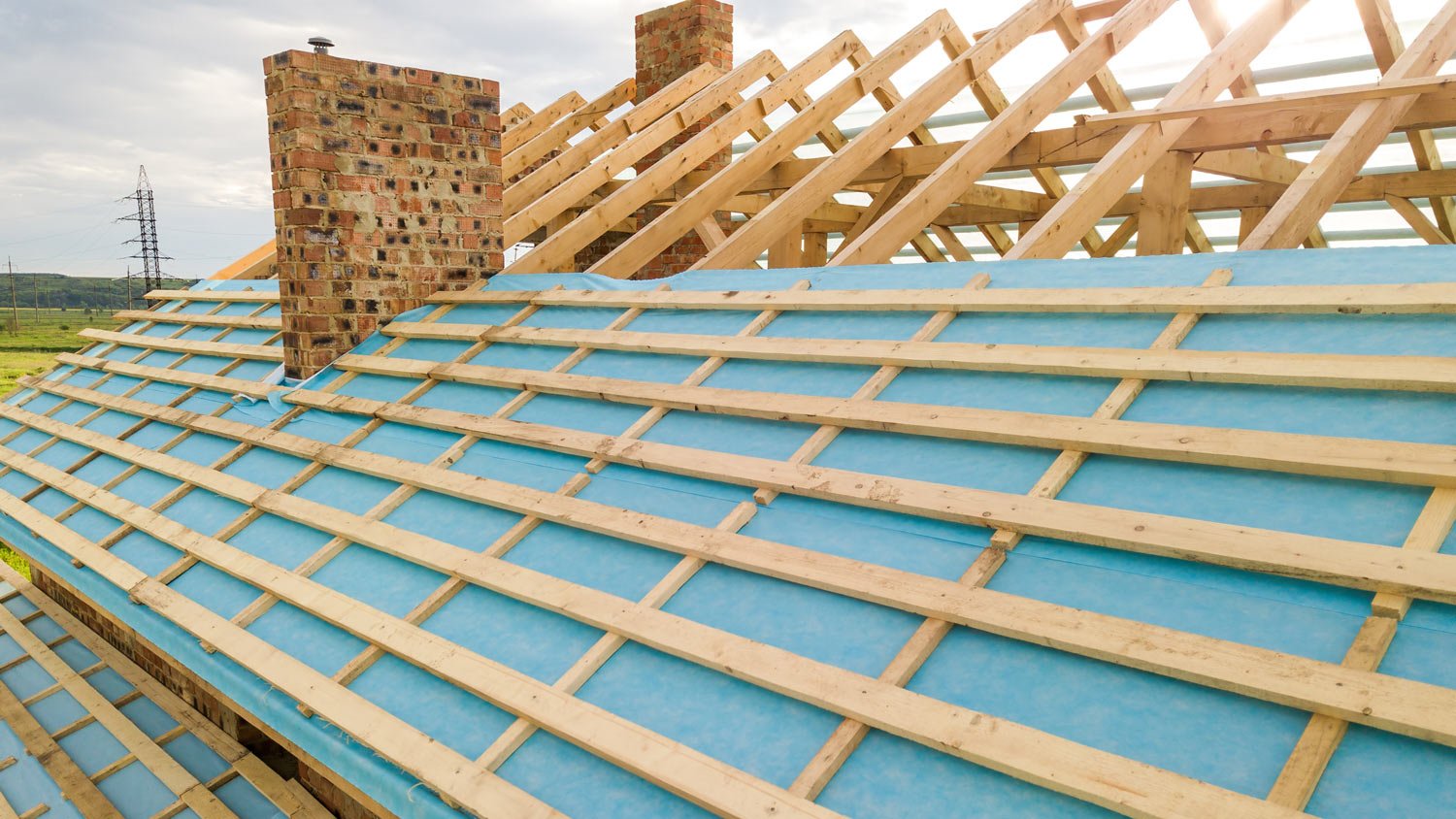
If you have moisture issues, battens might be one of the most important parts of a roof. These vertical planks, made from a number of different materials, are installed over sheathing to elevate roofing tile and create a breathable space that allows condensation to evaporate. Beyond that, they can also:
Offer extra support to your roof truss system
Help secure roofing materials to your roof
Help align roofing sheets
Keep in mind that not all roofs have battens. They’re normally not a requirement unless you have a metal roof. When you budget, make sure you include them in your total metal roof cost.
A collar beam, sometimes called a collar tie, is a horizontal beam that connects two rafters toward the top of a roof truss. This beam rests in the upper third of the truss and supports the rafters to prevent sagging. A collar beam can also anchor rafters together and prevent them from separating if there’s heavy wind or an unbalanced roof load (particularly in climates with snow).
The ridge is your home’s highest point, where the two sloping roof components meet. It’s found in various styles of roofing, including gable roofs, which are the most common.
A roof’s ridge is critical for two reasons. First, it provides vital stability for your roof structure. The ridge acts like a spine that holds the two sloping pieces together.
Second, most ridges contain a ridge vent, an air exhaust vent on top of your home that helps your home stay cool.
Since hot air rises, many home builders recommend a ridge vent over a roof vent. Giving your home a vent at the furthest possible point prevents pockets of warm air from getting stuck in your attic.
The drip edge is a molding that seals the edge of your roof by the eaves and prevents water damage or moisture from getting inside. There are multiple types of drip edges, but each performs the same function of protecting your roof from leaks, rot, and other moisture damage.
It attaches right at the point where the edge of your roof meets the siding of your home.
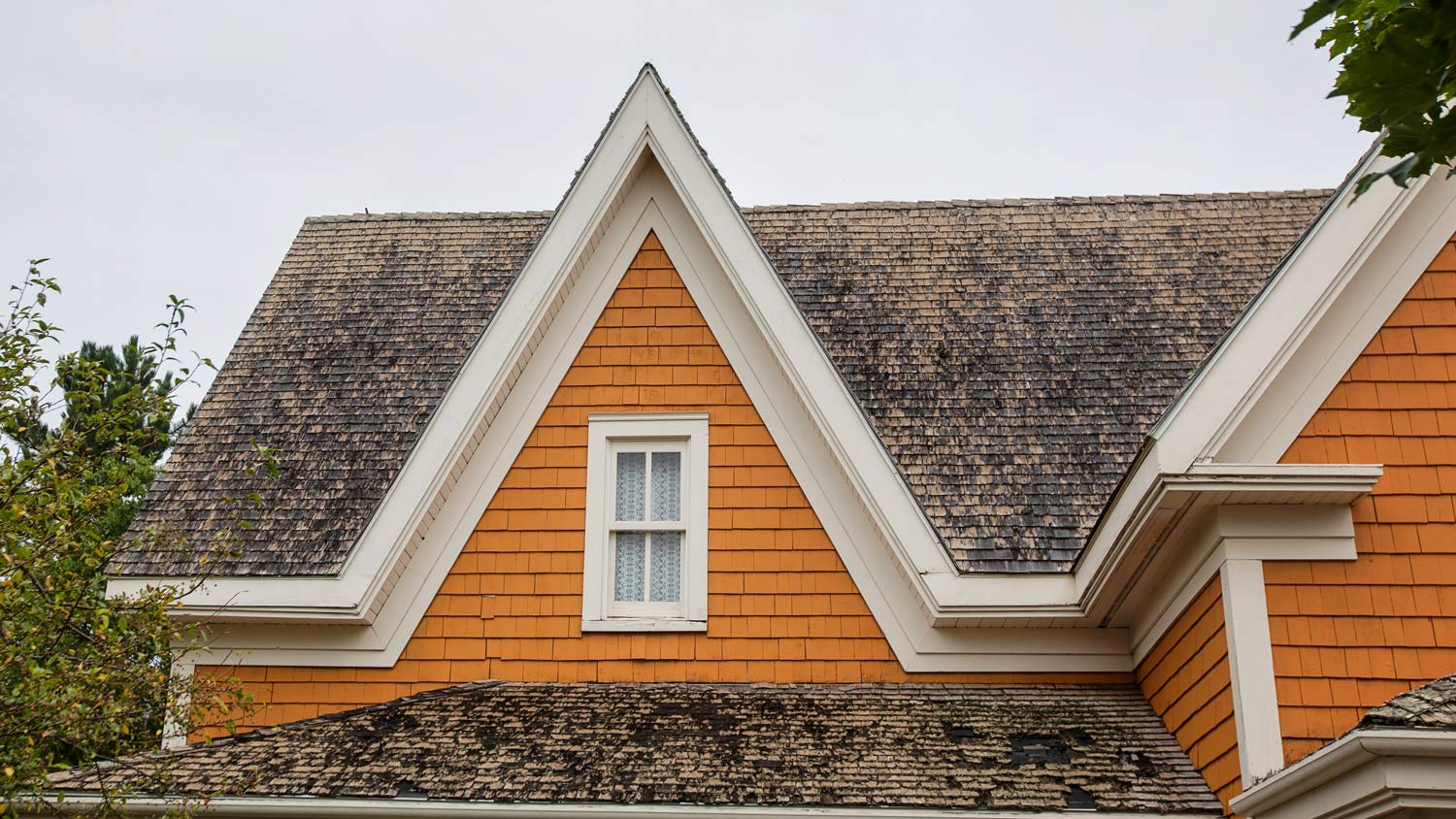
Eaves are the part of the roof that overhangs the exterior walls. Roof eaves direct water away from your home’s walls and foundation and provide shade from direct sun. Fascia, gutters, and soffits are attached to the eaves to provide drainage and protect the rafters. Eaves can extend anywhere from a few inches to several feet away from the walls—their size depends on the roof’s style and house design.
Soffits are made of material attached to the underside of the eaves, creating a finished surface and protecting exposed rafters from the elements. Soffits may be made of wood, vinyl, or aluminum and are often vented to allow airflow.
Roof fascia is a group of wooden boards that provide structure to your home’s side.
Without it, your gutters and downspouts wouldn’t have as much support and would hang off the side of your home.
Gutter systems guide rainwater off your roof and direct it away from your home.
Gutters prevent water from pooling on your roof and channel water away from the area right next to your home so rainwater doesn’t seep into your home’s foundation.
Downspouts carry water down the side of your home from the gutters.
Some homes have long pipes fitted at the bottom of their downspouts that direct rainwater into the yard. Others install underground downspouts, which guide rainwater to the street, driveway, sidewalk, or a section of your yard further from the home.
Similar to the type of valley you’d find in the mountains, a roof valley is the part of a roof where two slopes meet. This helps direct water so it can flow off of your roof and into your gutter. You’ll either have a:
Closed valley: a valley covered in roofing material like asphalt shingles
Open valley: a valley that isn’t covered in roofing material
Closed valleys typically are fitted with some sort of waterproof membrane. Open valleys are typically fitted with metal flashing. If properly installed, a valley will help prevent leaks and keep your roof free from water damage.
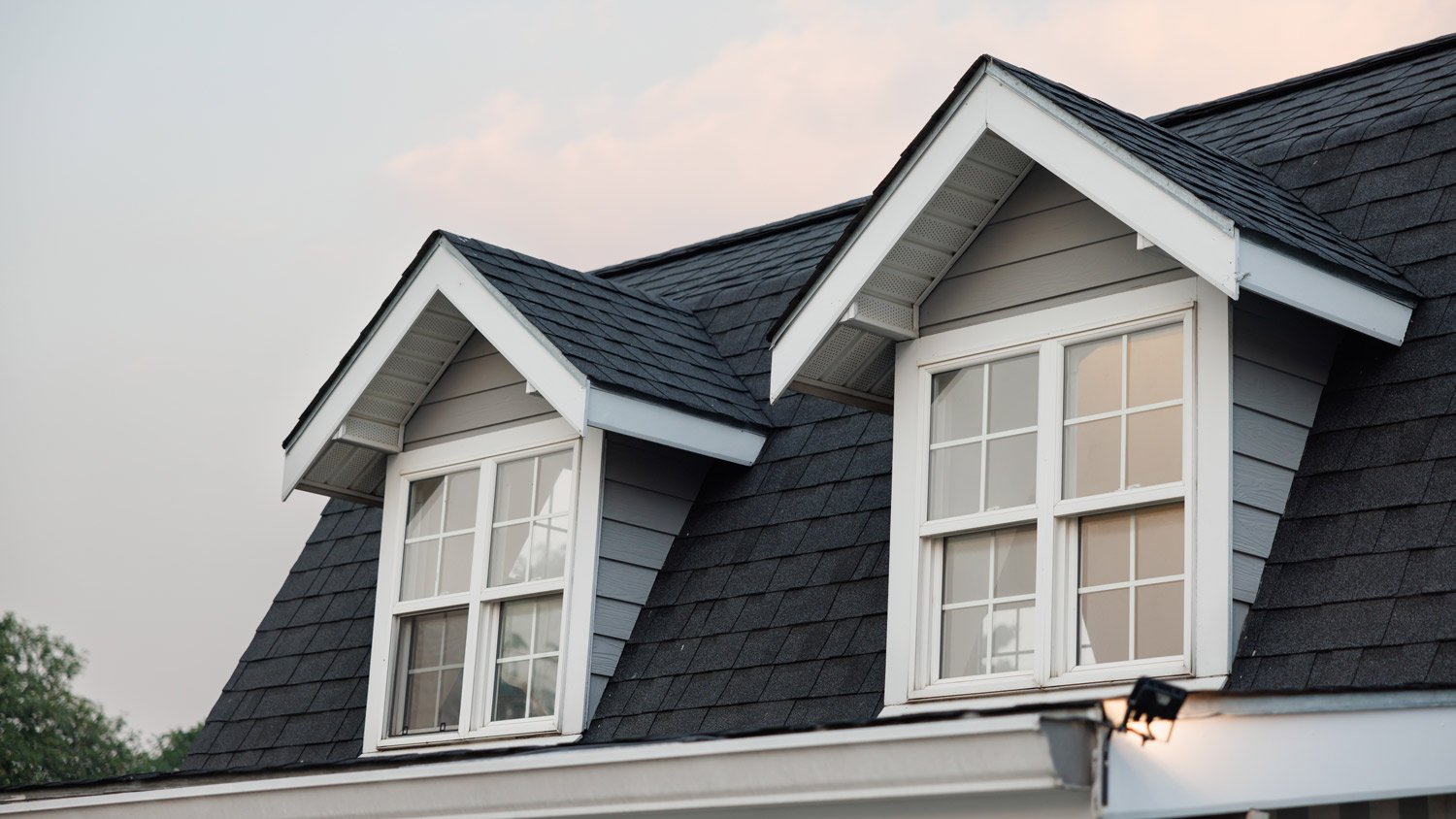
A dormer is a small roofed structure that protrudes from a sloped roof. Dormers usually have windows and are used to bring natural light and ventilation to upper floors. They can also increase the amount of livable space inside a loft or attic. This roof component is common in Neo-Colonial and Colonial Revival homes or homes with a gable or mansard roof.
A gable is the triangular section of wall between two slopes of a pitched roof. The most basic gable roof will have two gables, though many homes have more advanced construction with multiple gables.
A rake is the section of roof that hangs over the end of a gable and prevents water from leaking behind your siding. It typically consists of an extension of your roofing material with some type of soffit and fascia.
A hip occurs when multiple sloped sides of a roof meet at a single peak. Unlike a gable roof, which has two sloped sides, a hip roof will have at least four sloped sides. This type of roof holds up well in strong winds because it’s more aerodynamic.
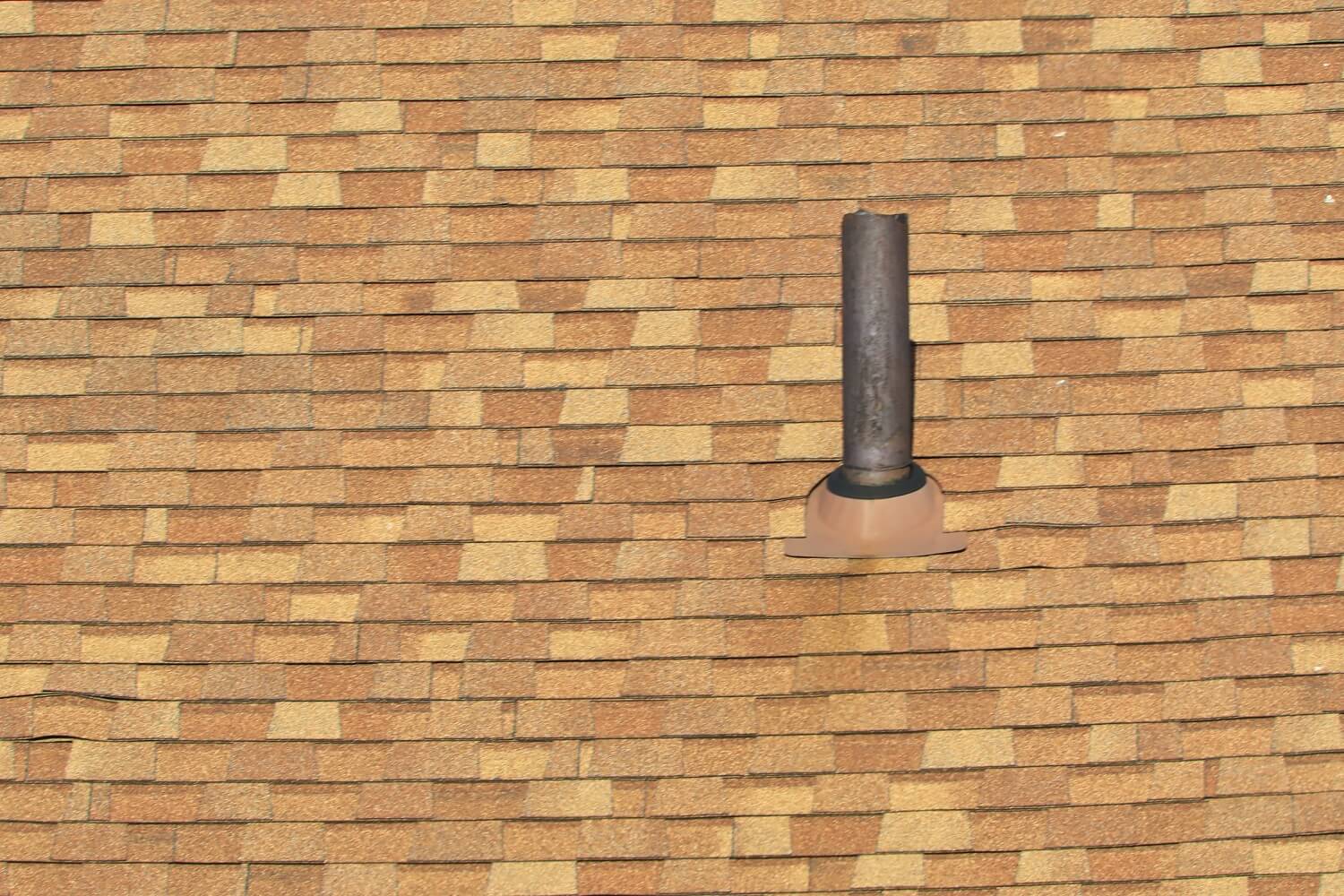
Many homes have a roof plumbing vent, also called a plumbing vent stack, which helps alleviate pressure from building up in your plumbing system.
When a plumbing system has poor ventilation, water and waste can get backed up in your pipes more easily.
Slow drains could be a sign that your plumbing vent is clogged, which may require a professional. If you do it yourself, it’s a two-person job—someone will need to turn on the water while you’re on the roof.
Your roof’s covering is the part that’s most visual from the outside. It’s also primarily responsible for protecting your home from weather damage.
Today, roof coverings consist of a variety of materials, including:
Metal
Steel
Clay
More environmentally friendly options, such as solar tiles and green roofs, are also becoming common. Solar tiles generate electricity for your home, while green roofs are made using recycled and repurposed rubber and other materials.
The many factors that play into choosing a roofing material may surprise you, such as durability, cost, style, and the climate in which you live. Many homeowners choose asphalt, but there are various types on the market. A roofer can advise you on the best materials for your home and region.
Skylights allow natural sunlight to flow into your home. The benefits of installing skylights on your roof include better ventilation, more natural sunlight, and more natural views.
There are some potential downsides, though, including:
Sun exposure causes furniture or carpets to fade faster
Loss of heat during winter
Loss of cool air during summer
Weigh the pros and cons and consider how much sun your home gets when deciding if you want a skylight.
Keeping your roof in good condition will extend its life and ensure it can fully protect your home. Staying on top of roof maintenance will prevent problems and help you avoid costly repairs. Having your roof professionally inspected yearly will help pinpoint problems, but a few regular maintenance tasks will keep you ahead of potential issues.
Your gutters function best when they’re clean and clear of debris. Clogged gutters can prevent proper drainage and may lead to water damage to your roof or foundation. Clean your gutters twice a year in the spring and fall to keep them working properly.
Flashing is a necessary component in preventing roof leaks, but it’s only as effective as the caulking that secures it to your roof. While flashing can last decades, caulk deteriorates over just a few years, so inspect your flashing every one to two years to ensure the caulk doesn’t need to be replaced.
Branches, leaves, moss, and other debris or growth on your roof can degrade or damage your shingles and compromise how well they protect your home. Clear off your shingles using a brush or leaf blower, and treat moss growth with a specialized cleaning product. Never use a power washer to clean your roof—the pressure can damage shingles.
Due to their proximity to your roof's drainage system, soffit and fascia materials are particularly prone to water damage. Rot or other damage can compromise the stability of your eaves and gutters and allow pests to enter your home. Inspect your soffit and fascia annually to ensure the material is undamaged.
Most roofs last somewhere between 25 and 50 years. If you live in your house long enough, you’ll eventually need to replace your roof. An annual roof inspection can help you catch and repair issues before they become a larger problem. Otherwise, there are typically a few signs that it’s time for a roof replacement:
You have multiple missing shingles
You notice pieces of shingles in your yard
Your shingles are starting to crack, curl, and warp
Your roof is sagging
You have water damage or leaks that repairs don’t seem to fix
Moss is growing on your roof, which signals a larger moisture issue
Even if you can make repairs, it’s a good idea to think about a roof replacement as soon as your roof hits 25 years old or you notice your neighbors replacing their roofs. Often, homes on a block were built around the same time as part of the same development. If your neighbor’s roof has failed, yours could be next.
While some minor roof repairs can be performed by a homeowner who’s comfortable working on a ladder, major repairs and roof replacement should always be handled by a pro. A licensed roofing repair contractor can assess the extent of your roof damage and advise you on whether you need a full replacement or just repairs.
If any of the parts of your roof are damaged, you may not need a full roof replacement. For most homeowners, roof repairs cost somewhere between $400 and $1,800. Minor issues, like a small leak, can cost as little as $200 to fix. Significant issues, like a sagging roof, could cost as much as $7,000 to fix. In that case, you may want to consider a roof replacement.
For most homeowners, a roof replacement costs somewhere between $5,800 and $12,550. On the high end, it can cost more than $45,000, depending on the materials and the size of your home. That’s no small expense. If you think you need a roof replacement, you should get a range of quotes to find the best value. Call at least three roofing contractors near you before you commit.
D1 Roofing delivers outstanding service from beginning to end, backed by a strong warranty and expert teams. I highly recommend them for their excellence in meeting and surpassing expectations with unmatched communication. Choosing D1 Roofing was flawless decision
I am really impressed with their timeliness and turnaround. Mitchell came out, and we decided to move forward with their pricing. Our roof was on within a week, and we could not be happier with their team! Amazing company, great prices and honest, dependable craftsmanship. I highly recommend...
Storms Mobile Welding was great to work with. They were prompt, professional and did an overall excellent job on the project. I highly recommend.
We used Unique Hardwood Floor LLC three years ago to work on the floors of a 70 year old home that needed a great deal of work. Some floors needed repairs, some were replaced and others just needed to be refinished. It was a complicated job as they needed to blend the old and the new to...
They damaged multiple items on my property, including a marble slab used as a table top, tried to hide it, and refused to pay or replace. Arrived day one without a ladder to access roof & delayed a day. Left a mess in back yard; didn't wear face masks; no show by owner to property to see damages
While Naaman and Mike were very professional and amicable to work with, there were issues in this project that makes giving a higher rating impossible. We had several communications issues that delayed completion. The roofers accessed the property without communicating with me. Just showed up...
Lyle did a great job removing asbestos shingles from our front porch roof. They worked together with our roofer to make sure that the new roof was able to be installed on the same day that Lyle removed the asbestos shingles.
What a pleasure working with a professional organization that takes pride in its work and wants to ensure customer satisfaction. Out of the several quotes I received for the re-roof, Capps was not the cheapest, but I felt I could trust them to do an excellent job and I was not disappointed....
They did a great job. They checked to determine where the squirrel was gaining entry and set traps to catch it. They removed all of the squirrels (there was only one) and kept the traps in the area with fresh bait to ensure there were no more. They were thorough & effective. Also they...
A wild goose chase. Maybe this is no big deal since this was not an emergency - not a tree that had crashed through my roof - just a nuisance tree that needs to be removed. Even so, it strikes me as quite careless and perhaps a bit rude.
From average costs to expert advice, get all the answers you need to get your job done.

Dealing with a visibly damaged roof or leak? Learn about roof repair costs in Columbus to see how much you’ll need to budget for a permanent solution.

Learn about roof replacement costs in Columbus and what factors are at play to budget accurately and make sure you’re getting a fair price.

A metal roof can defend your home against Ohio’s varying weather conditions. Learn how much a metal roof costs in Columbus, OH.

Understanding the available types of roof trusses helps you create the desired shape and support for your roof. Learn more about the different options.
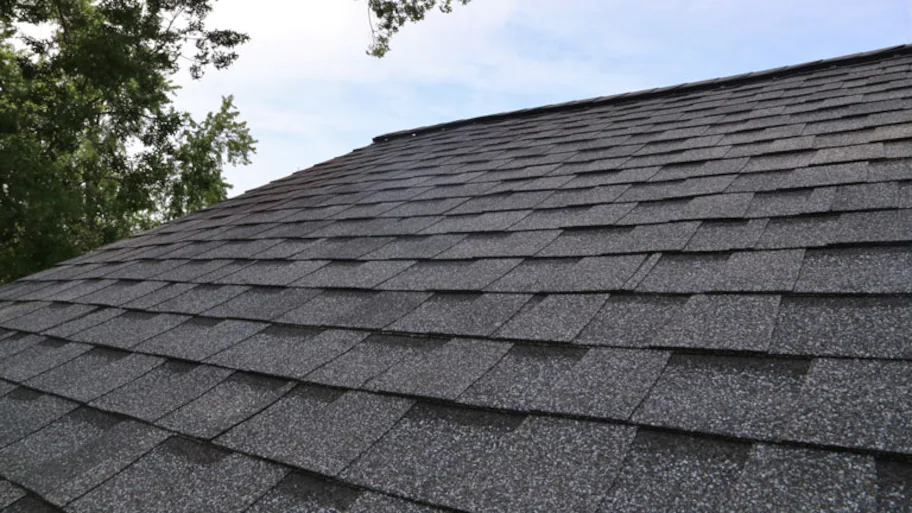
The best types of roofing materials are tailored to the local climate, energy efficient, and well suited to the roof pitch.

Shingles that are losing their granules may not be protecting your roof. Learn why shingle granule loss happens and what it means for your roof.